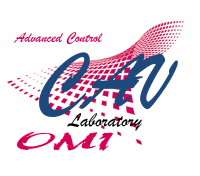Optimisation, Modeling and Identification (OMI)
Team Head : Pr. BOUDJEHEM Djalil
 |
Team Members:
|
1. Objectives
Optimisation, modeling and identification are the main recherche axes of this Team. The optimisation is a very generic research domain with a number of applications in various domains, such as plants modeling and control (pharmaceutical, biotechnology, chemistry, aerospace, ...), the structural design, mechatronic system design, analogic circuit design, electrical engineering, system dentification ….
our team will be able to develop, improve and apply the latest optimization techniques to achieve the maximum of the objectives mentioned above.
Practically, mathematical models are often derived from physical principles, it is often difficult or impossible to find these models because of the complexities that have occurred in real systems, it is more convenient to derive black box models directly from data measured in using methods such as system identification. In this point, the team develops, improves and applies parametric and non-parametric identification techniques to provide the best models used for system control.
2. Scientific foundations
- Development and improvement of meta heuristic and stochastic optimization methods such as PSO, simulated annealing, genetic algorithms ...
- Optimization using meta heuristic and stochastic optimization methods
- Development of modeling methods.
- Modeling of mono and multi-variable systems of complex systems and industrial processes in order to prepare them for the control stage.
- Development of methods of identification
- Parametric and nonparametric identification of systems
- The identification of the parameters of the controllers of integer or non integer order.
Keywords: Optimization, stress, parametric, nonparametric, genetic, PSO, Simulated annealing, modeling, identification,


